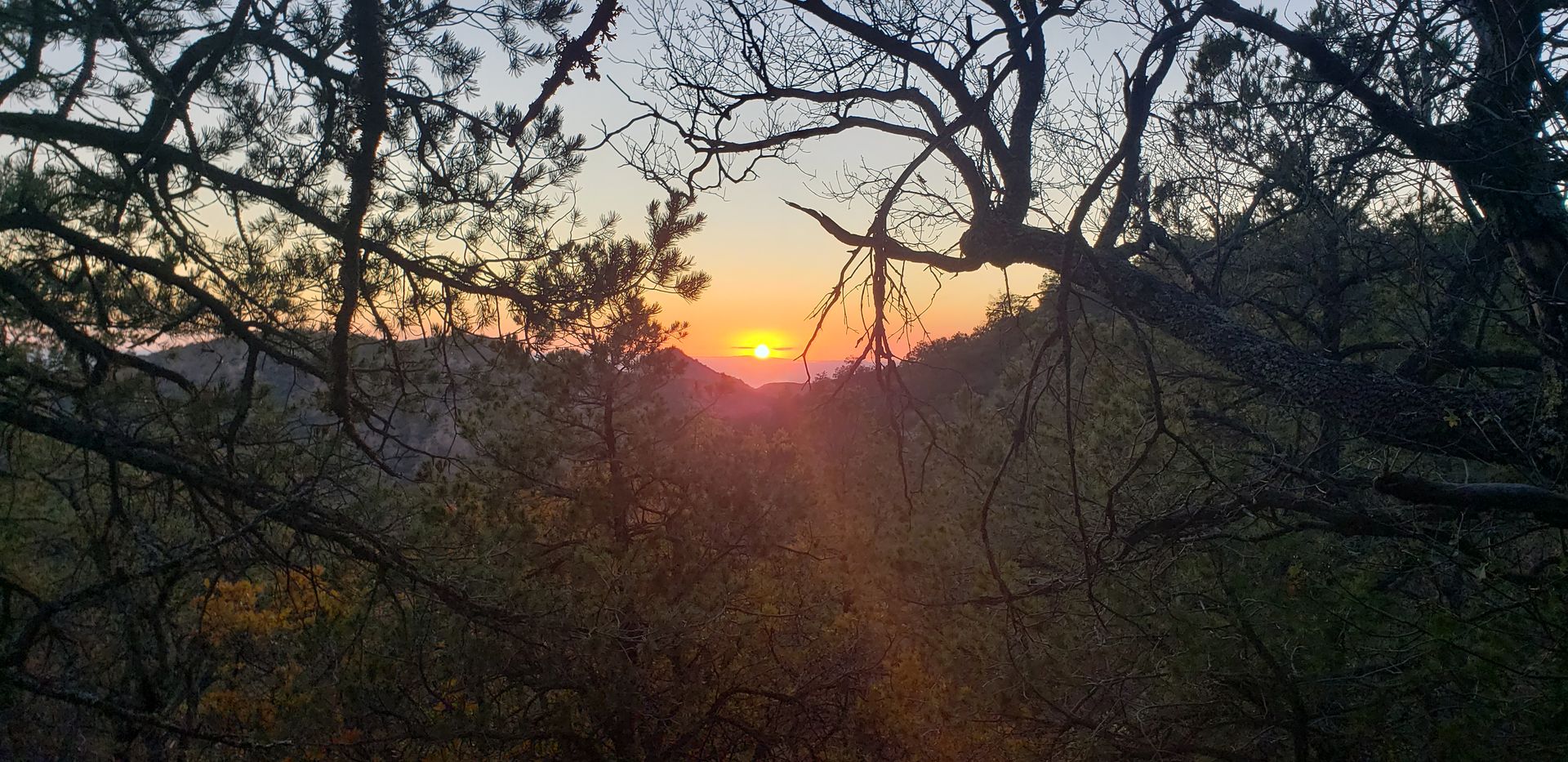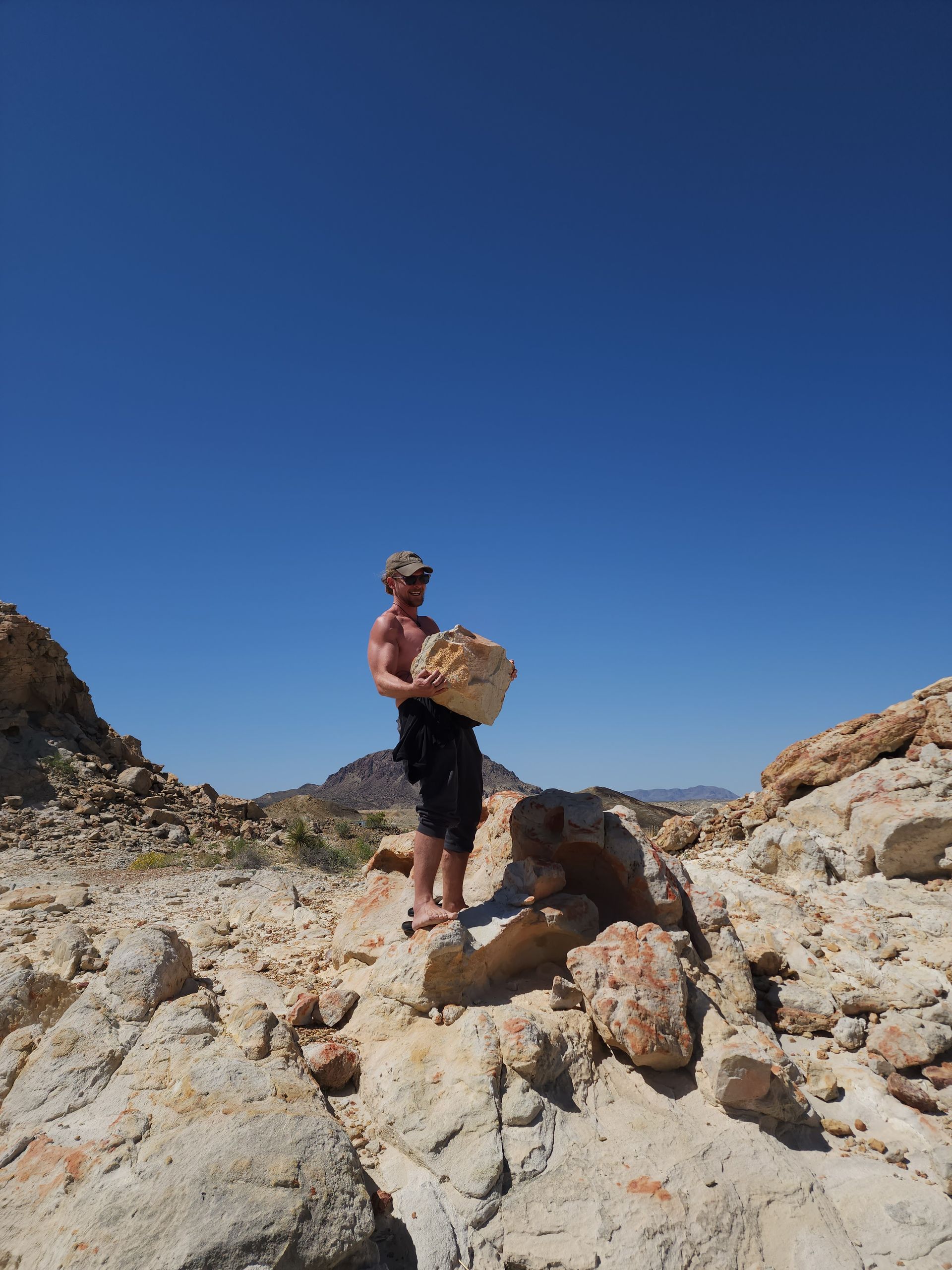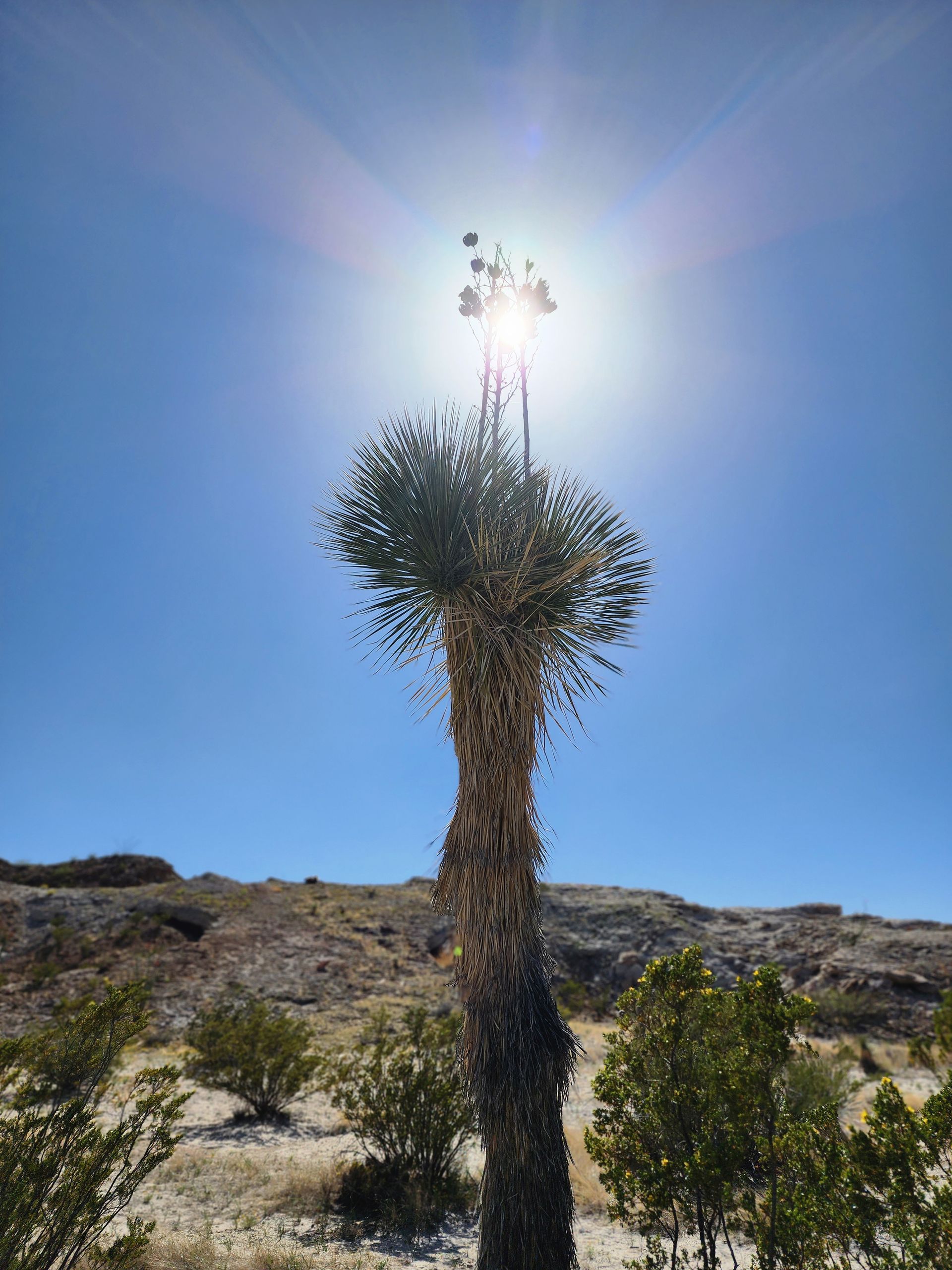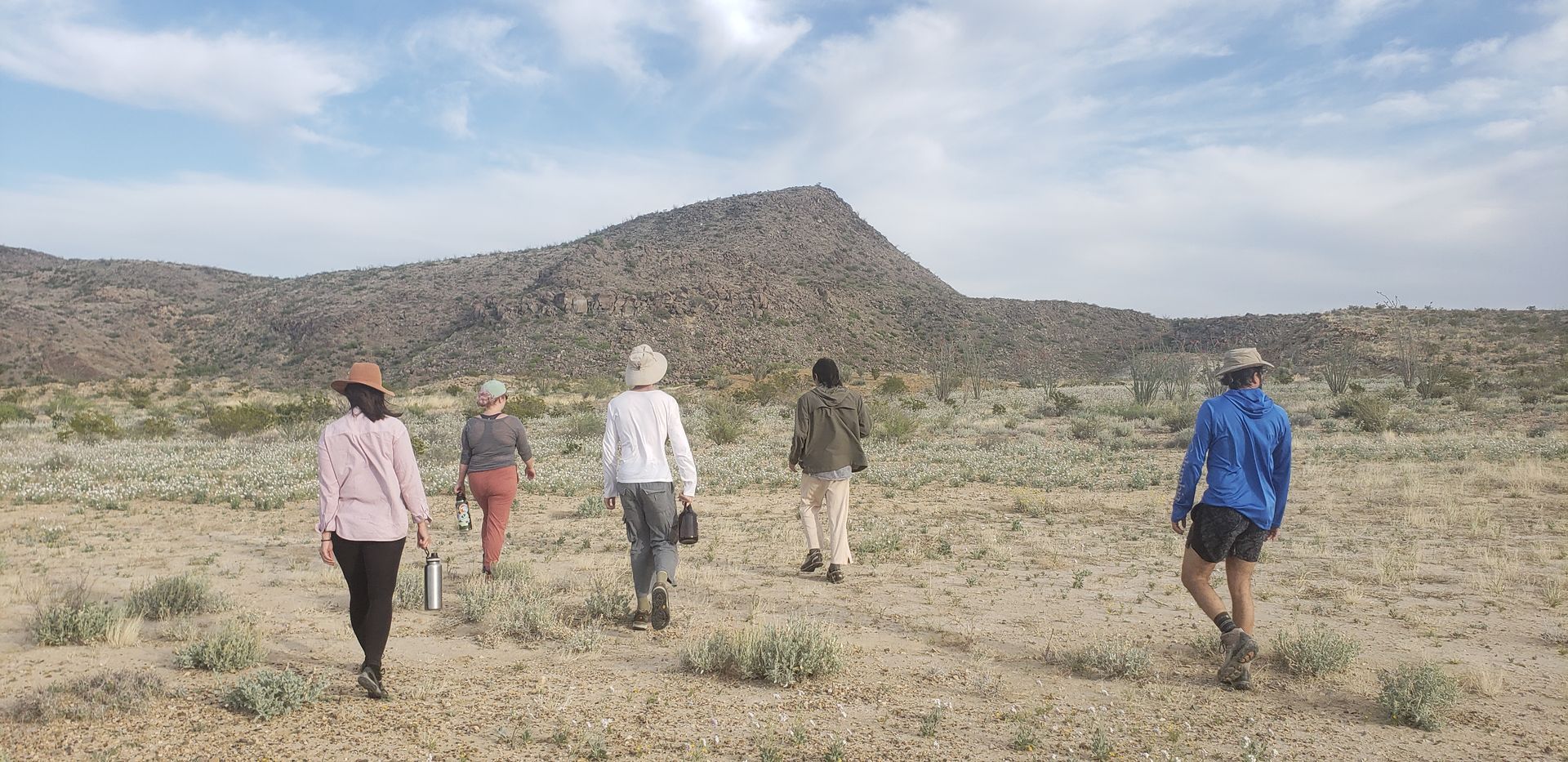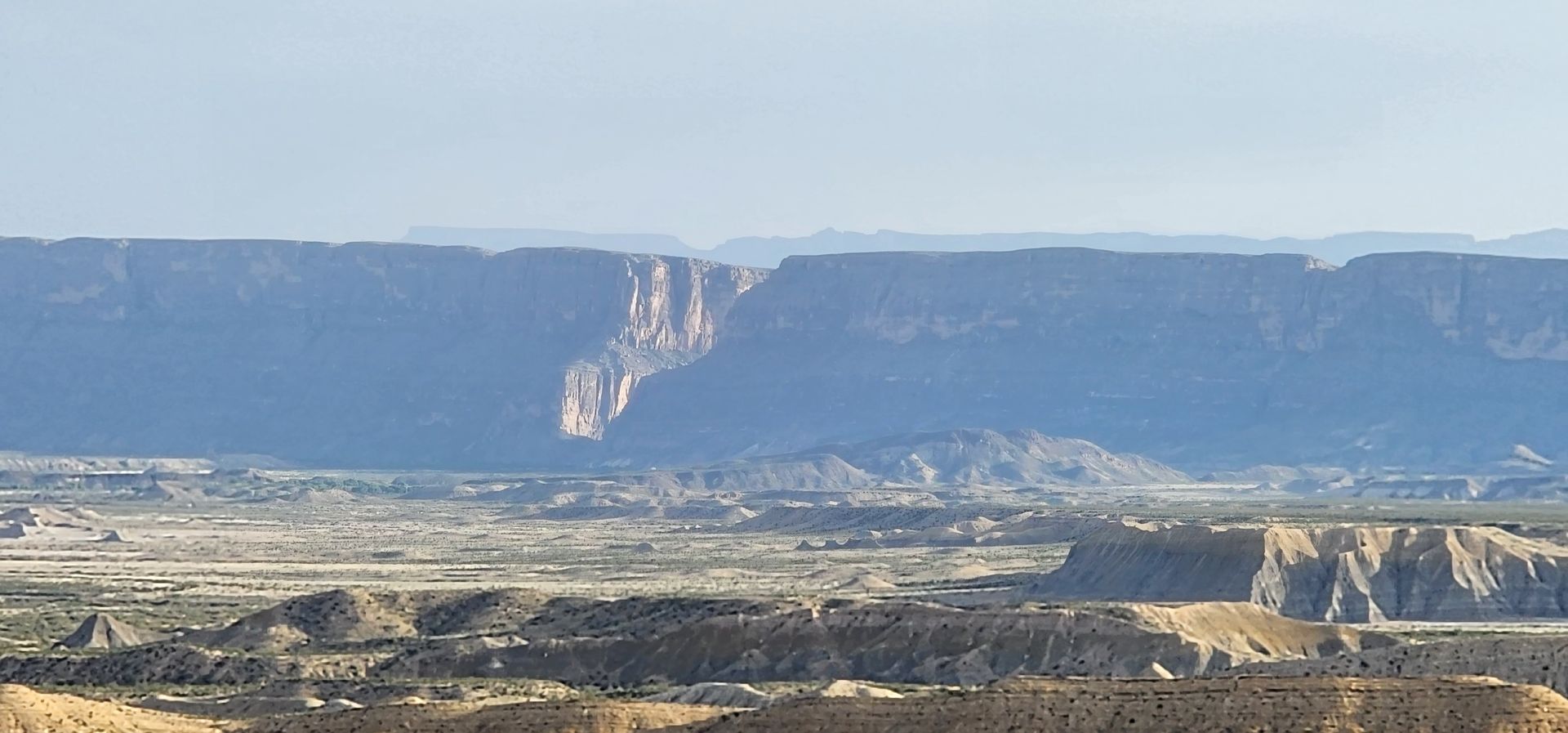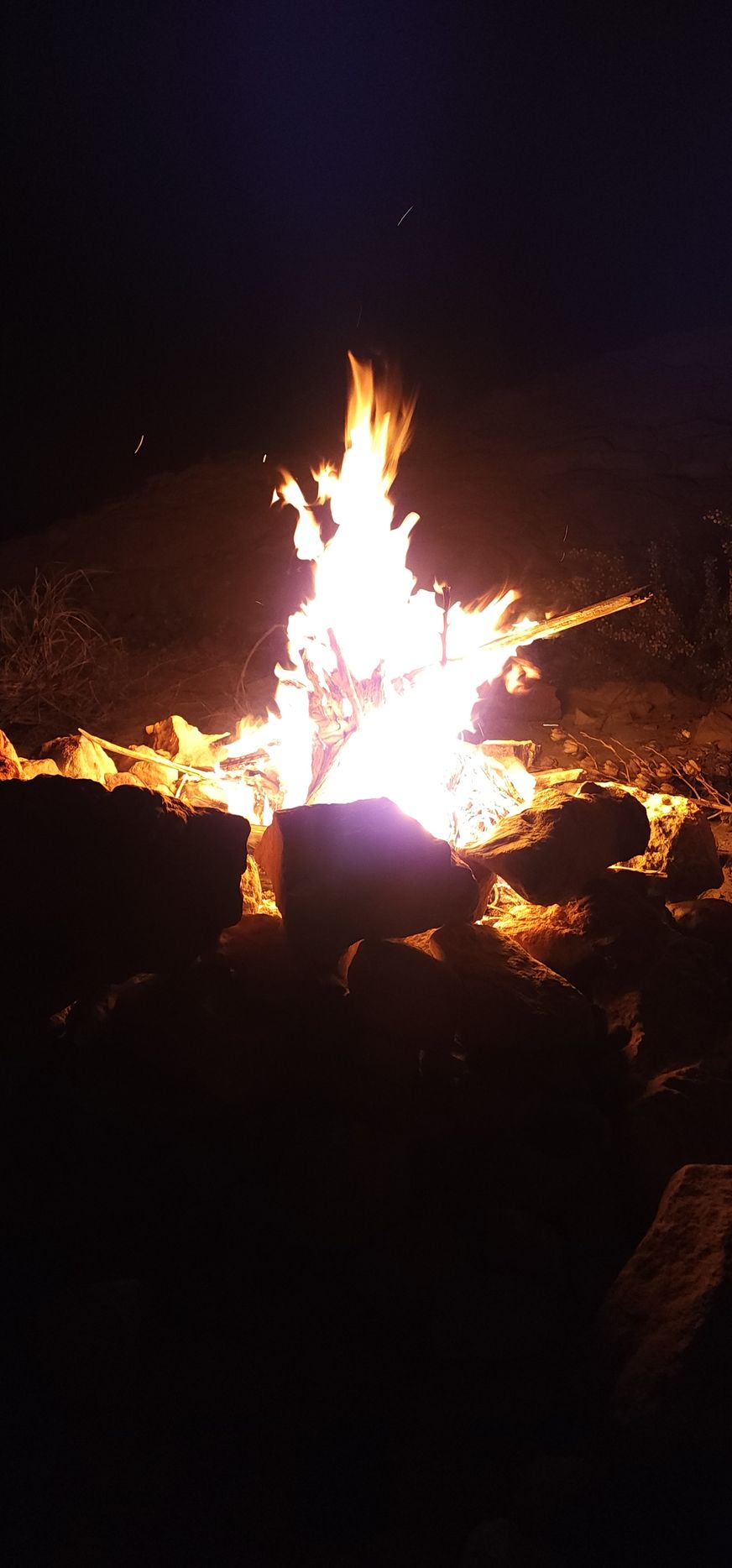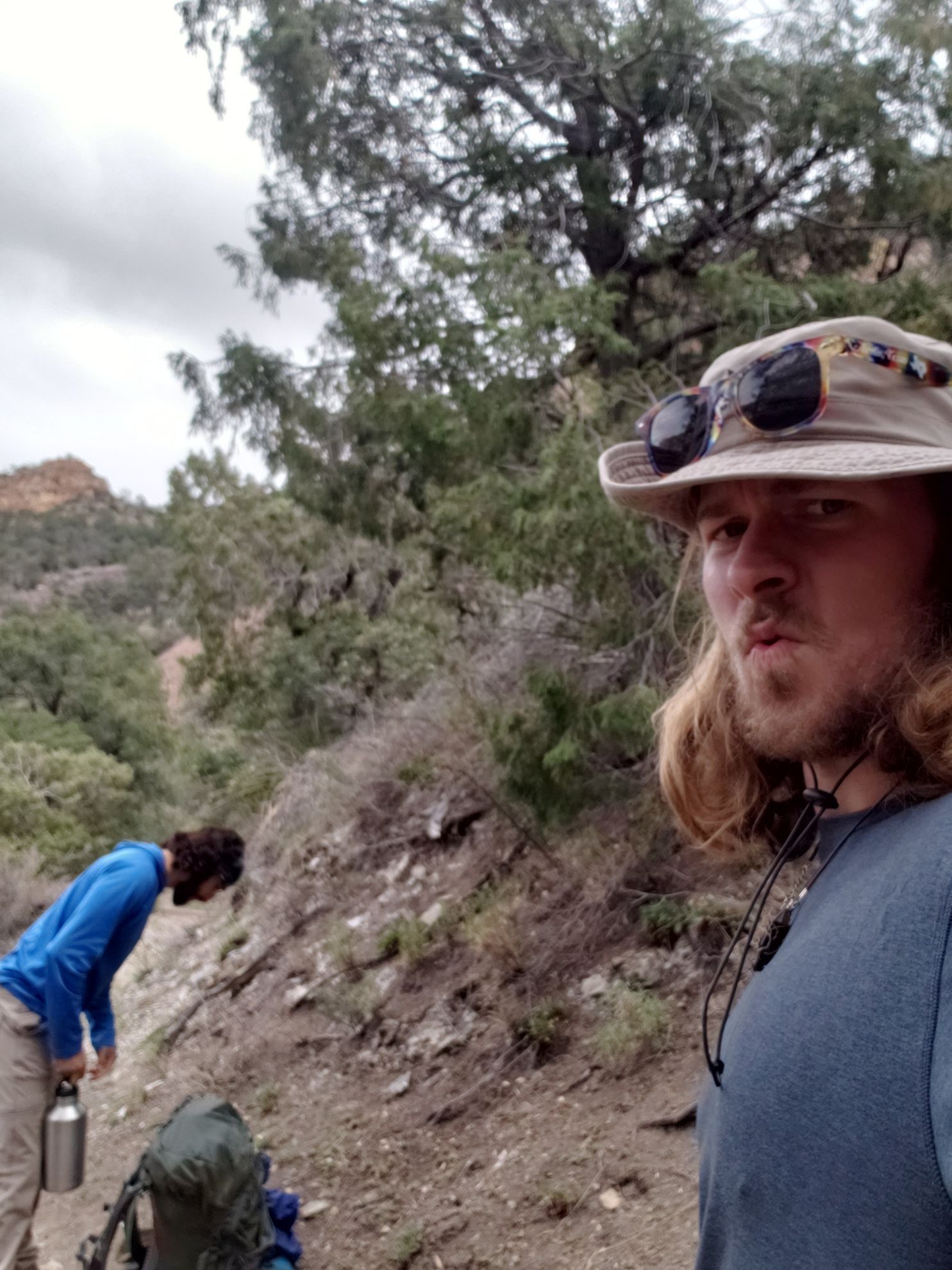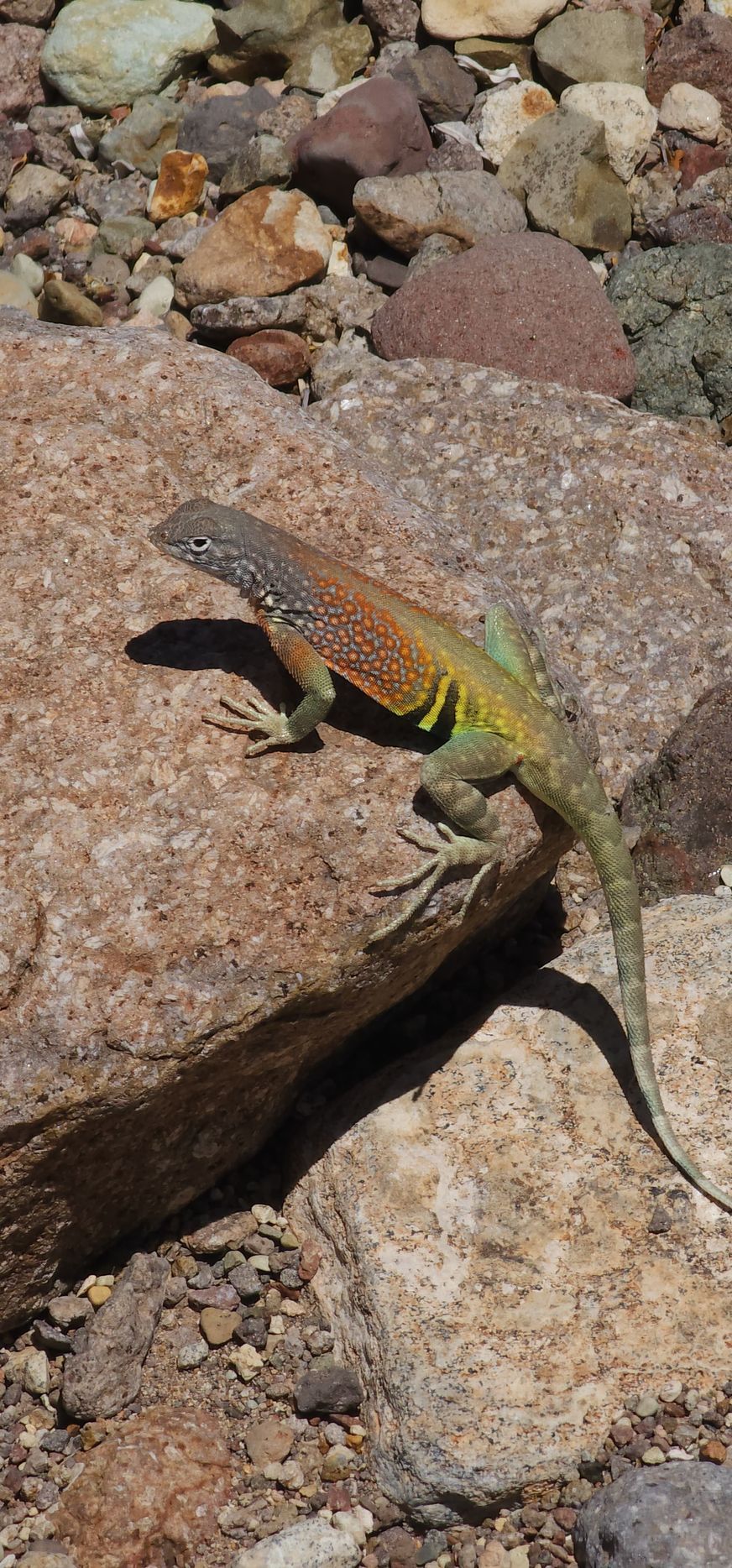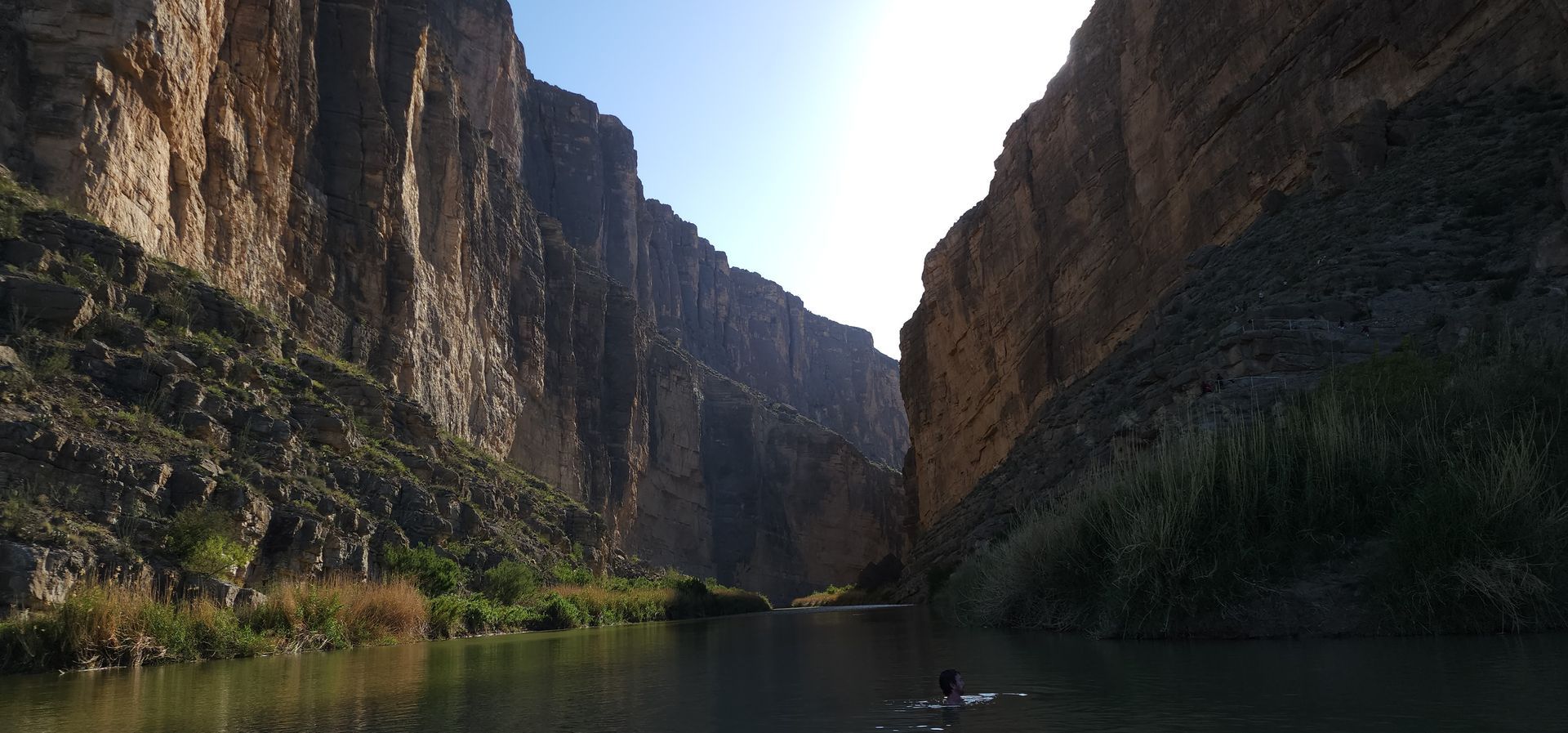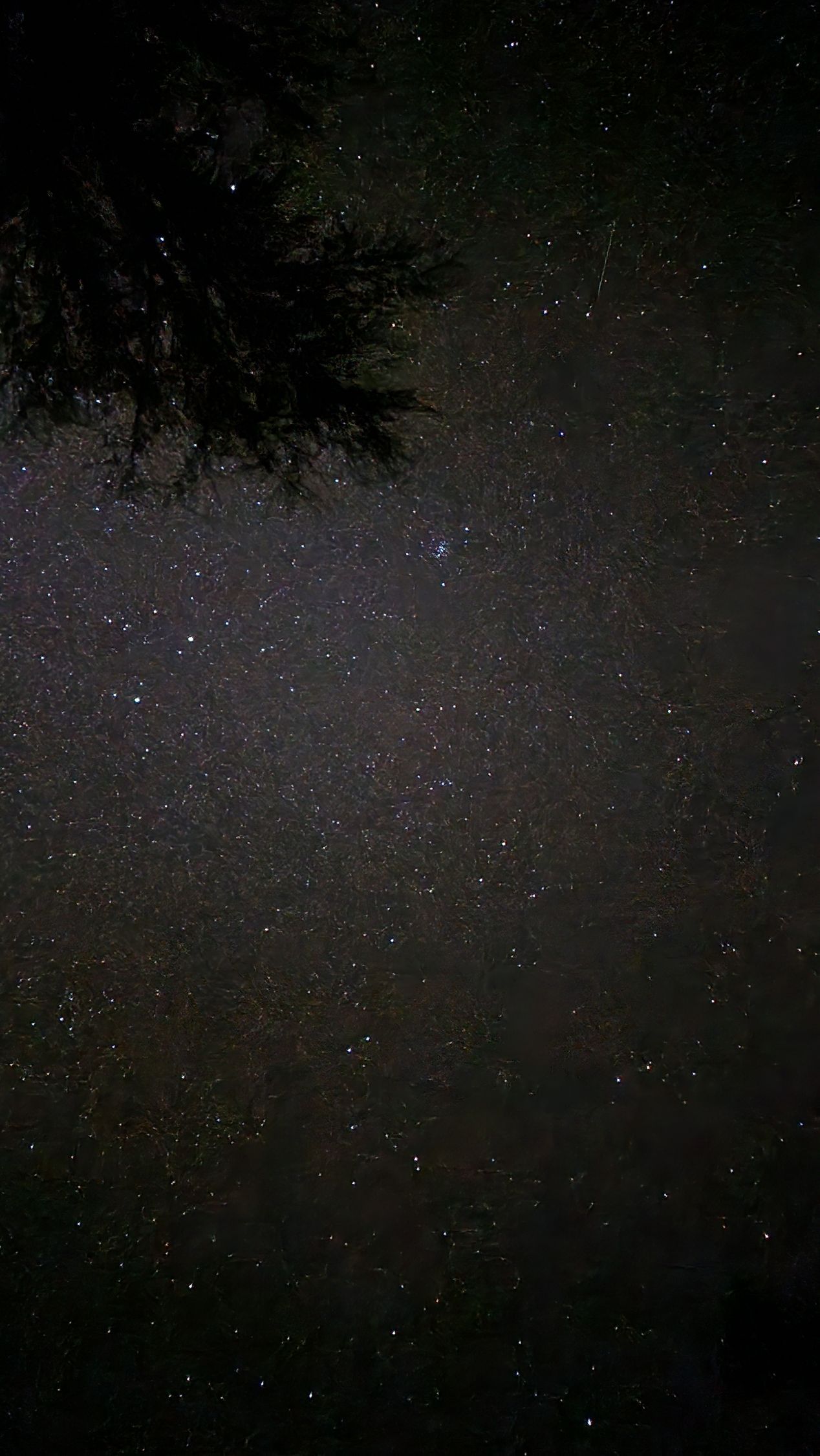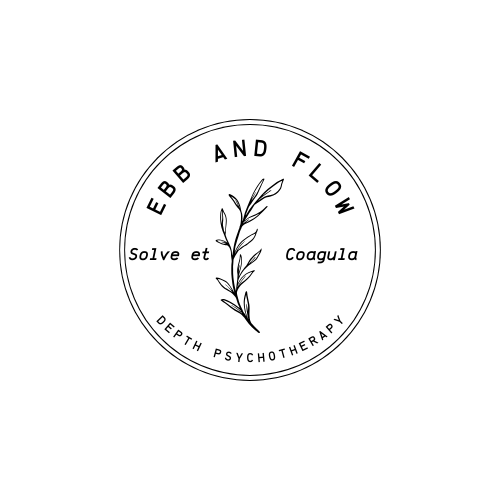Descent to Soul Canyon
Try Less; Get Out of the Way
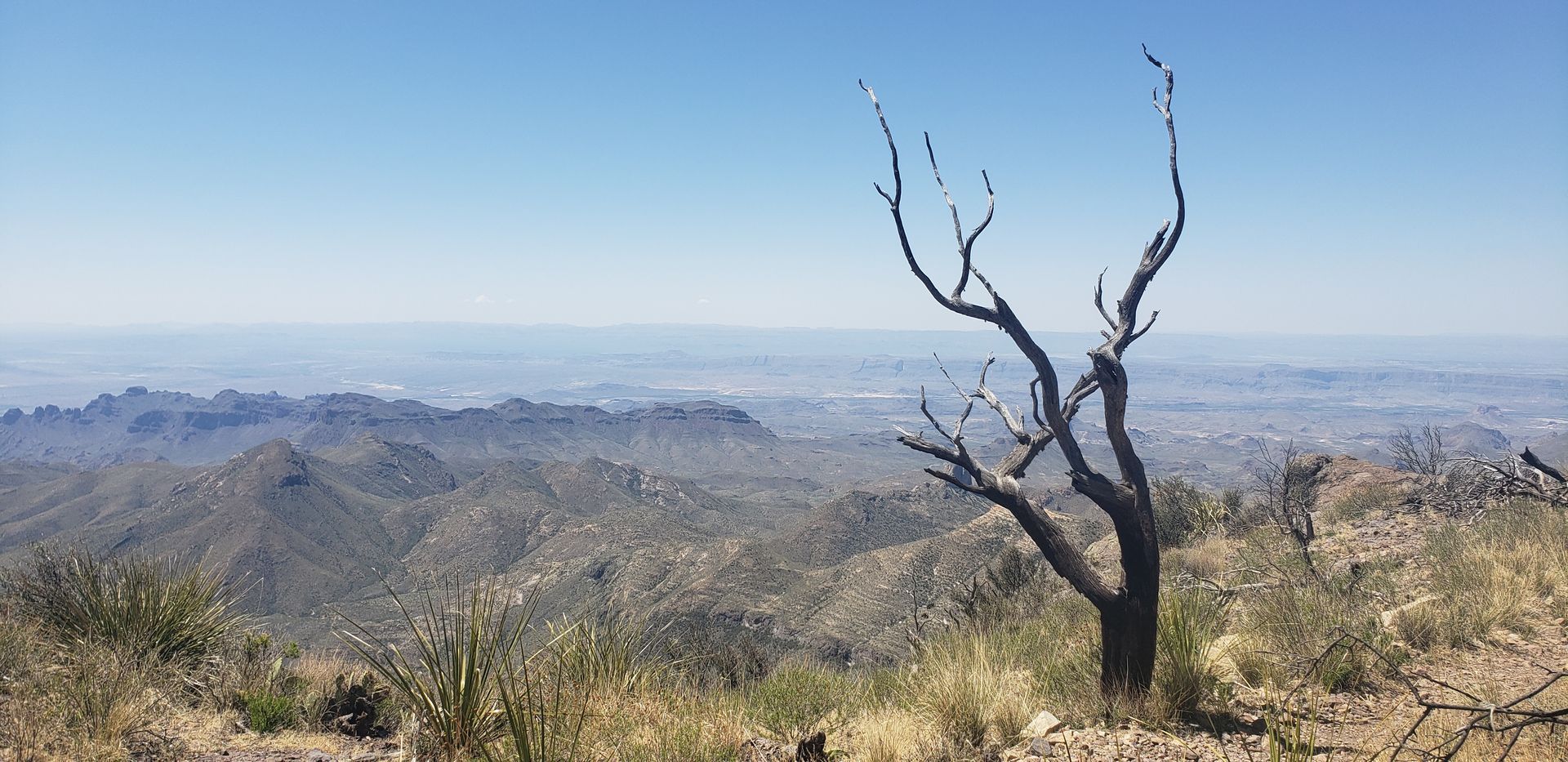
Our destination is Big Bend National Park. Our caravan embarks early, the threads of soul spinning wildly. Our conversations dance and flow with an amazing lucidity, parts of a singular organism. We deepen. Our love for ourselves and each other begins to pour out like a flood. I am no longer with the people that I have known, but with the living dynamic beauty of Soul in action.
We set up camp in a desert valley in Terlingua, just outside the park. While the others gather firewood and explore the surrounds, my compatriot and I venture into the park to obtain our backcountry permits. We will hike up the Laguna Meadow trail the following morning when we are 40 hours fasted and with 50lbs of water and gear. It will be the most arduous physcial experience of my entire life.
When we return, we all venture towards the top of a local hill, dancing in the wildflowers and delighting in all of the whimsical features of that strange land. We are coming into a greater communion. Cacti calls to one of our number with precarious vocality. The views are incredible, the landscape magical. As night descends, we build a fire, trading tales and experiences, desires and pain. The fire dies down, and we join hands around the coals. “I am the one who…” we all take turns saying. We offer our prayers and one by one retire to our bed rolls and tents. There is no turning away.

Morning comes, and we say our farewells. The two of us that have a long hike ahead venture out first. Within the first half mile of the hike, it is clear that this journey will demand everything of us. The hike up the Chisos is ~5.5 miles, with nearly 2,000 feet of elevation gain. Everytime we stop to rest we are in delirium. With no energy to spare our egos, the prolonged hypnagogic state is achieved. Strange visions emerge everytime I rest my eyes. By the time we arrive at the campsite, we are absolutely gassed. Our rejoicing is brief, followed by a lengthy midday slumber. Potent dreams await us at night…
The following day is where we each find our soul encounters. Mine was more of a soul nudge – I feel that I have been clay in Soul’s hands for the last few years, and this was simply an indication of one place in particular I was not paying much attention to.
I have always deeply loved music and had a natural sense of rhythm. I’ve played alto sax for about 20 years, and have a melodious voice. I have felt a call to be a country/folk singer, but have never made much effort towards that endeavor other than singing consistently on drives, at home, and at the occassional open mic.
While wandering on the third day, I began to hum a tune, and began to put words to it. The song came out more or less like this in its fullness:
Here we are my friends
In the valley of surrender
No common sense
We chase the de-hew of dawn
With flowers in our hair
And torches of dry blooms
We’ve come to dare
That death will not be our doom
Keep all your blessings
They abound out here
Take all my transgressings
Transmute them into air
I’ll never know
Just what this plane’s about
Oh but what a joy it is
To-oo-oo find out.
My heart broke open as I sang these final words, delivered gingerly from the Muse. I sobbed uncontrollably. I felt the utter recognition of my strength and beauty, and mourned all the time I spend outside of this feeling. I wept for my family, my mother, my father, the Earth.
For the remainder of the day, I wandered and pondered. A heaviness came over me, a felt sense of being on the wrong path, of being utterly lost, what Plokin and others refer to as subpersonalities, a part of myself not fully in my own consciousness that can take me over and that causes distress in my relationships (precisely so that we may come into consciousness of them – it is how wounded children meet their needs). This dejected, lost sub appeared to me that night in the form of a homeless African American father and son.
I had seen these two before in a previous dream a year and a half ago. Then he took the form of a homeless young black man on the streets of San Francisco who had come up to me saying that I “owed [him]” (see Embodied Dreamwork Practices Part I). I did not recognize him at the time.
In this most recent dream, the father and son were dear friends of mine, and I was able to give them a place to stay (I still employ them in a wounded way in order to draw a romantic connection closer to me, but progress is progress). This is why I look to my dreams with such fervor. I feel they reveal us so delicately and perfectly, and to witness the transformation of our unconscious parts cements a joy that is difficult to describe.
All of this is well and good, but the real work began as we returned to the middleworld, back to our homes and habits. Many of us have had major shifts even in this week, and for myself, what I needed to let go of and what I needed to welcome in have been very apparent.
I remember the call of my soul. I remember the strength, vigor, and clarity that is my birthright. I am Rekindler of the Arcane Flame to Feed Hungry Hungry Hearts. The fire burns so brightly in me that it draws others near where their own wells may grow hot.
And this is just the beginning…
